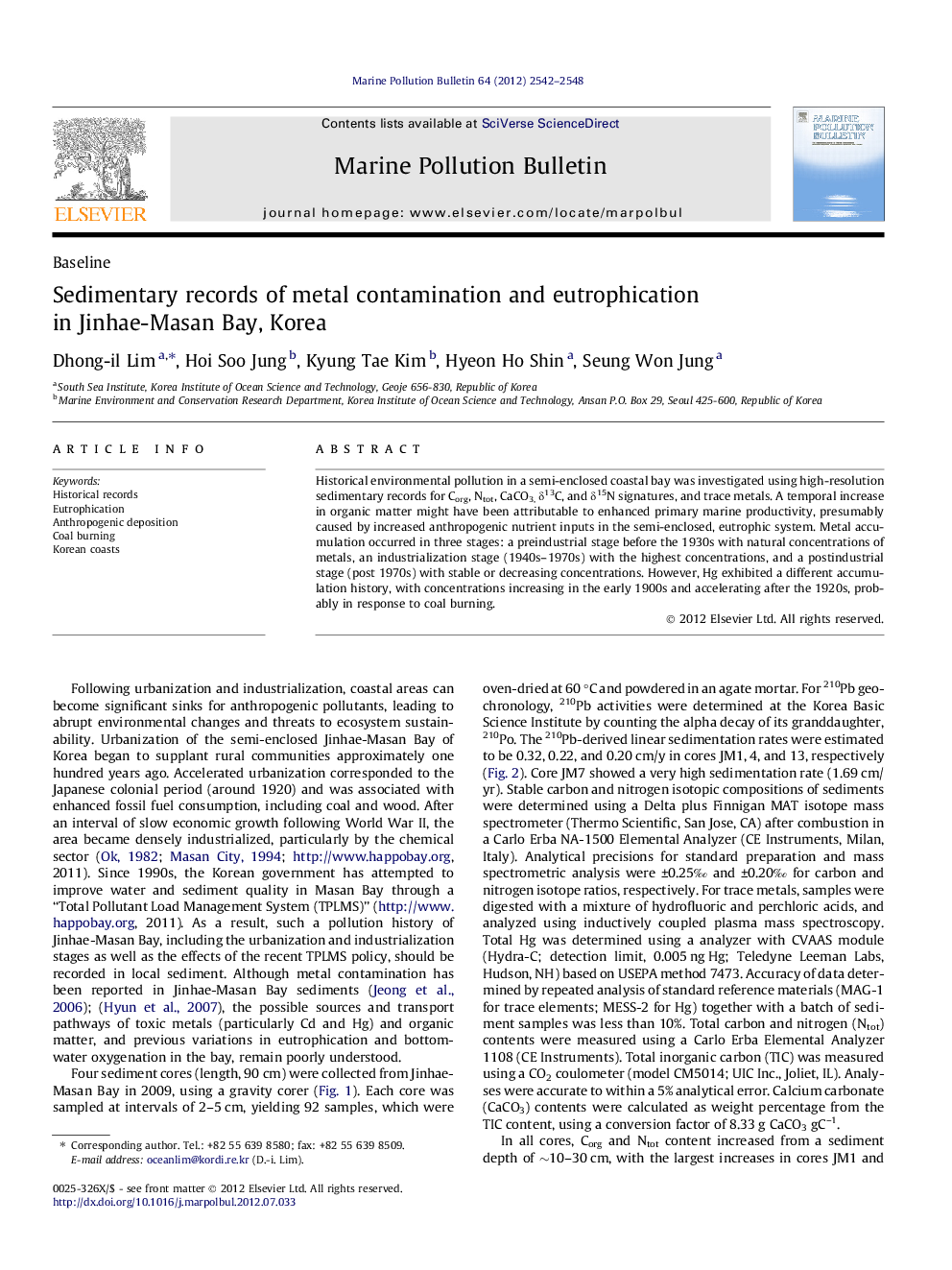| Article ID | Journal | Published Year | Pages | File Type |
|---|---|---|---|---|
| 6360885 | Marine Pollution Bulletin | 2012 | 7 Pages |
Historical environmental pollution in a semi-enclosed coastal bay was investigated using high-resolution sedimentary records for Corg, Ntot, CaCO3, δ13C, and δ15N signatures, and trace metals. A temporal increase in organic matter might have been attributable to enhanced primary marine productivity, presumably caused by increased anthropogenic nutrient inputs in the semi-enclosed, eutrophic system. Metal accumulation occurred in three stages: a preindustrial stage before the 1930s with natural concentrations of metals, an industrialization stage (1940s-1970s) with the highest concentrations, and a postindustrial stage (post 1970s) with stable or decreasing concentrations. However, Hg exhibited a different accumulation history, with concentrations increasing in the early 1900s and accelerating after the 1920s, probably in response to coal burning.
⺠The bay of Korea becomes eutrophic, with anoxic sediment, as of the late 1930s. ⺠Metals showed apparent three stages in their accumulation history. ⺠It is correlated with the development in industrialization and population. ⺠Hg accumulation, related with coal burning, was started at the late 1900.
